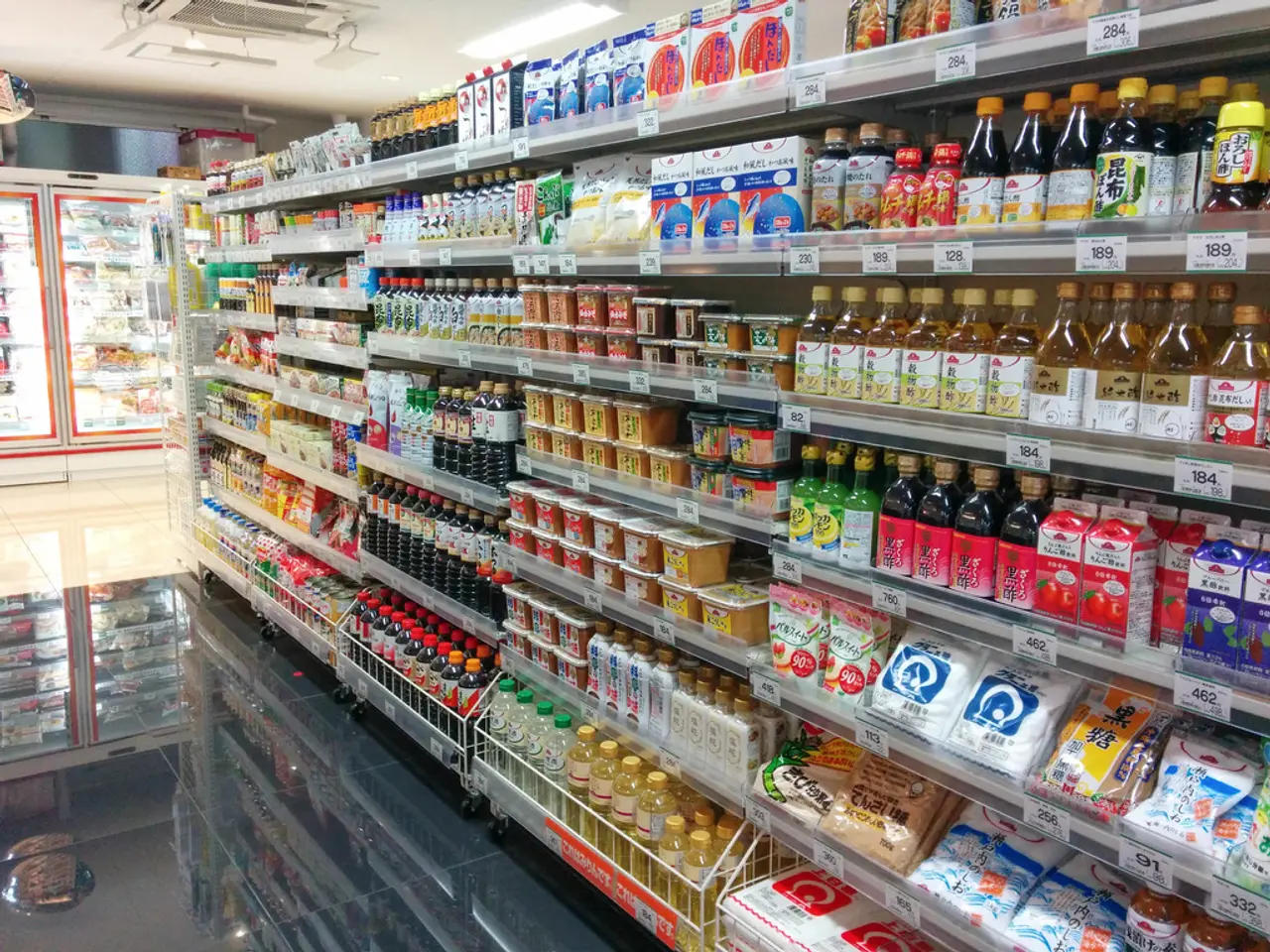Expanded Nationwide Delivery of Perishable Goods Within a Day by Amazon
Amazon's expansion of its same-day delivery service for fresh groceries to over 1,000 cities, with plans to reach more than 2,300 locations by the end of 2025, is intensifying competition with brick-and-mortar supermarkets while demonstrating significant growth potential in online grocery retail.
This expansion includes thousands of perishable items such as produce, dairy, meat, seafood, baked goods, and frozen foods, delivered alongside millions of other products (household essentials, electronics, apparel) within hours. Amazon offers this free for Prime members on orders over $25 and for a fee to non-members.
The integration of fresh groceries into its specialized temperature-controlled fulfillment network helps maintain product quality, a key factor in consumer trust. Insulated, recyclable bags will be used to keep groceries cool during delivery, supporting sustainability concerns and product freshness.
Impact on Brick-and-Mortar Supermarkets:
By offering a wide range of fresh grocery items with rapid delivery, Amazon competes directly with traditional supermarkets like Albertsons, Kroger, Target, and Walmart. This can erode foot traffic and sales at physical stores, especially among convenience-seeking consumers and Prime members.
Amazon’s ability to combine grocery orders with other retail items in one convenient same-day delivery order increases consumer wallet share, potentially capturing grocery spending formerly directed to in-store purchases. The push for speed and convenience forces traditional grocers to enhance their own digital and delivery capabilities, increasing investment in logistics and infrastructure to keep pace.
Growth Potential:
With over 150 million Americans shopping Amazon and $100 billion spent on groceries and household goods in 2024 alone (excluding Whole Foods and Amazon Fresh sales), the service taps into a vast existing customer base. The rollout into thousands of additional cities—including rural and smaller communities—expands Amazon’s reach beyond urban centers, where traditional grocery delivery may be limited.
Customers can order fresh groceries alongside electronics and home goods in a single checkout, increasing convenience and boosting average order values. The use of recyclable insulated bags and six-point quality checks supports sustainability concerns and product freshness, potentially enhancing brand reputation among environmentally conscious shoppers.
In summary, Amazon’s same-day fresh grocery delivery expansion is poised to accelerate online grocery growth significantly, challenging brick-and-mortar supermarkets by offering greater convenience, breadth of selection, and advanced logistics. This trend will likely drive continued investment and innovation in grocery retail across both online and physical channels.
The service was first trialed in Phoenix in 2024 and has since been expanded to Orlando and Kansas City, Mo. Neil Saunders, managing director and retail analyst at GlobalData Retail, predicts that the service will grow Amazon's food market share. Doug Herrington, Amazon's CEO, described the rollout as a quick and easy experience for customers. Top sellers include bananas, strawberries, apples, and avocados, while fresh produce, dairy, meats, baked goods, and millions of Amazon staples are available for same-day delivery.
- The expansion of Amazon's same-day grocery delivery service, including fresh items like produce, dairy, and meat, challenges brick-and-mortar supermarkets like Albertsons, Kroger, Target, and Walmart by offering convenience and a wide selection, potentially eroding foot traffic and sales at physical stores.
- Amazon's service, which allows customers to order fresh groceries alongside electronics and home goods in a single checkout, has the potential to enhance brand reputation among environmentally conscious shoppers with the use of recyclable insulated bags and quality checks for product freshness, thereby increasing not only convenience but also consumer wallet share.




